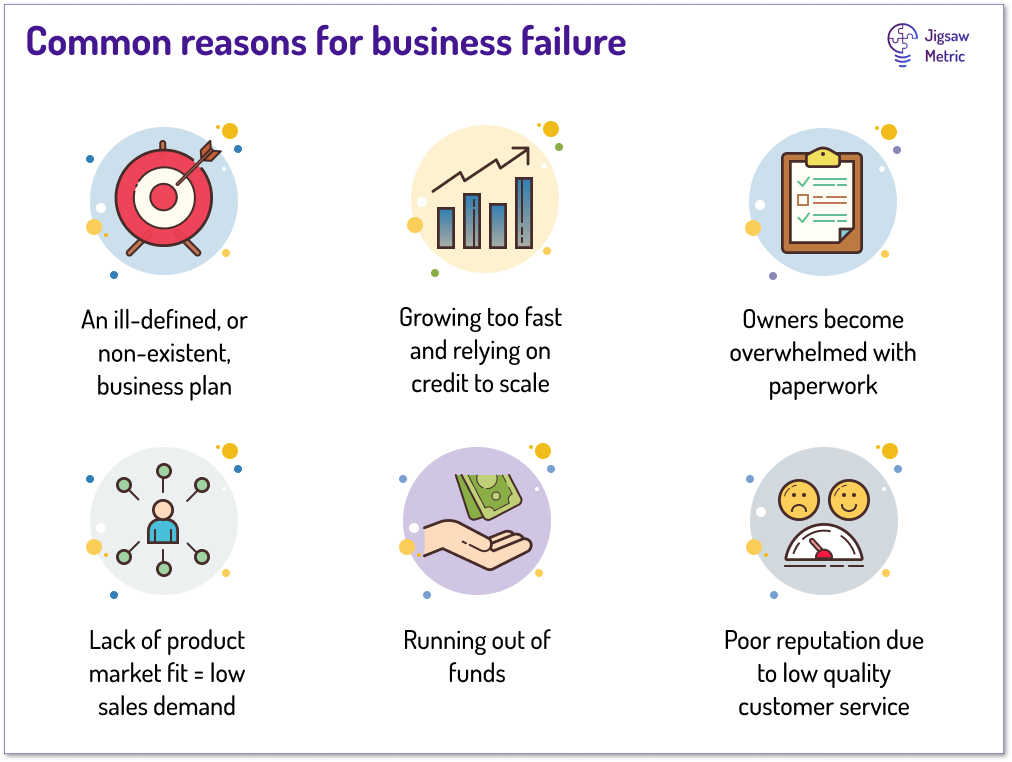Running a small business is an arduous task whichever way you look at it. Competition is tough, margins are thin, and red tape is taxing. On top of all, loyal customers are hard to find and even harder to keep.
To stay in the race, it’s critical to take the right management approach and avoid the seven deadly sins small businesses tend to commit. Let’s dive into the most common mistakes and the effective ways to avoid them.
🎓 CAFLOU® academy is brought to you by CAFLOU® - 100% digital business management software
1. Sloth: You don’t plan your business properly
A business plan is what helps set your short- and long-term goals and track your progress. A business plan is the first 15 % of the business development, and it will ensure that the last 85 % will go smoothly.
Problem: Less than a third of small business startups have a business plan, and its lack or inefficiency is identified as one of the top three reasons for failure.

The lack of a business plan or its inefficiency is among the top reasons for small business failure
Image Source
Fix: A strategic and realistic business plan is the written roadmap that lays out your core activities and objectives. You need to outline achievable goals for your company, how you can go about achieving them, and what potential challenges you may face, along with their possible solutions. For your operational purposes, a business plan does not have to be detailed. It should be a work in progress updated periodically.
2. Envy: You don't have your business processes defined
A business process can be defined as an activity or set of activities aimed at achieving a particular company objective. Business processes should be specific and clearly mapped, with purposeful goals and consistent results. There are a number of benefits to having your processes well-defined, including:
- Improved efficiency
- Enhanced communication between the people and departments in your organization
- Identification of key tasks required for achieving your goals
- Establishing standardized procedures and avoiding potential chaos in day-to-day operations
- Clarity and visibility of the current state of the processes
Problem: Failure to define business processes effectively impairs accountability, profitability, and transparency for business operations at all levels.
Fix: Implementing the right technology can help you clearly define and organize the business processes in your company. Note that you don’t necessarily have to adopt an extremely sophisticated and complicated system to keep your processes well-defined and organized. You can utilize tools that come with templates, structures, checklists, or even automation of processes.
3. Gluttony: You don't take full advantage of automation
Automation is one of the prevalent small business trends and comes with a number of benefits for businesses of all sizes – from taking tedious repetitive tasks off your plate to ensuring consistent and timely outcomes. Taking advantage of automated processes has long gone beyond being a privilege of large corporations only.
Problem: Four out of ten small business employees think they can be much more efficient and productive at work, and nine out of ten report performing repetitive, time-consuming tasks daily. Opting for manual operations has a negative impact on the quality and quantity of the work performed in your company.
Fix: Automate your operations. Implementing a dedicated system allows you to automate different processes and tasks by setting conditions that trigger a particular action on the part of the platform. For example, you can adjust the system to monitor a task status and when it changes, the software will automatically reassign the task, change its priority, send notifications, and perform any predetermined actions without your attendance.
How to create an automatic process / workflow
You can easily create automated workflows and processes using a business management system
This frees you from the need to constantly monitor project work progress, accelerates and streamlines operations, and helps eliminate errors and delays. In addition, you can invest your time in activities that drive your business instead of tackling the purely mechanical aspects of your day-to-day operations.
4. Wrath: You don't manage your cash flow proactively
Cash flow provides a measurement of the amount of cash flowing into and out of your company in a given period of time.
Problem: 61 % of small businesses regularly struggle with cash flow issues leading to failure to pay suppliers, employees, and loans experienced by 32 %.
Fix: Leverage specially designed solutions that enable you to manage your cash flow proactively, prevent economical problems, and increase your business’ health. You can gain valuable insights into your financial performance and know where cash is coming from and going at any moment.

A cash flow management tool lets you monitor the flow of cash into and out of your business both in real-time and historically
Such tools offer comprehensive reporting functions, which help you forecast your payments, plan your cash flow, and make data-driven smart decisions.
5. Greed: You don’t invest in marketing strategies
Irrespective of the industry, size, or structure, a business requires effective marketing to be successful. This is the way to increase brand awareness, attract new customers, and establish relations of trust and loyalty with them.
Problem: Small businesses rarely plan and invest in marketing as they consider it an unnecessary expense. Nearly half of small business owners deal with marketing on their own, and 1 in 10 doesn’t allocate any budget for marketing.
Fix: Prioritize planning and implementing a consistent marketing strategy. You can either outsource marketing efforts and use the expertise of a marketing agency or assign an employee with the task. Leveraging the huge potential of digital to promote your brand, products, and services will help you unlock new opportunities for business growth. The development of promotion strategies will fuel your company with increased sales and bring sales forecasting data to better plan your overall business operations.
6. Lust: You don't establish internal policies and company culture
Clearly set internal policies and company culture are essential for building a healthy and productive work environment.
Problem: Dealing with the multitude of daily operational and cash flow issues, small business leaders tend to have difficulty establishing a strong company culture. They fail to define responsibilities clearly and set a common framework for employee evaluation and problem-solving. As a result, employee assessment is based on the time spent instead of the work done, which can bring about a lack of trust and tension.
Fix: Create a plan for building a healthy culture. Identify the employee behaviors beneficial for the business and establish the practice of such behaviors. Communicate your culture clearly and reinforce it with your own example. Drive the company culture through transparency and accountability.

A workflow management tool provides complete transparency of the tasks performed and the responsible employees
Implementing a work management tool will enhance the visibility in your organization so that everybody can see what is done, when, by whom, and with how much effort.
7. Pride: You don’t listen to your customers
The success of a business depends on how well it manages to respond to customer needs. The vast majority of customers, or 91 %, would choose a brand that provides them with relevant offers and recommendations.
Problem: Small businesses are likely to suffer gaps in communication due to the inefficient use of all communication channels. Missing their customer message would mean failure to stay in touch with them and understand their challenges.
Fix: Streamline your communication with customers and make sure to be responsive on all channels preferred by them. Talking to them will help you pinpoint their real pain points and provide services and products they really want and need. You will gain a deeper understanding of why customers come to you and why they leave or churn.
A business management system allows you to communicate with clients using email and keep them updated on the progress of your current project. Also, you can easily integrate your business management with a customer relationship management platform and deliver seamless experiences to your clients.
Takeaway
Now that you’ve gone through the seven sins of small business management, it’s time to take a closer look at your operations. If you recognize any of the problems we’ve discussed, take a fast step to redemption and bring noticeable improvement in your company’s present and future.
<< Back to all articles in Caflou Business Management Academy